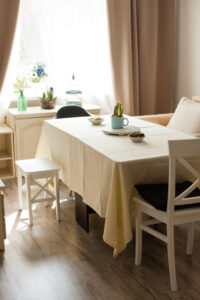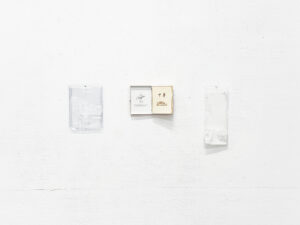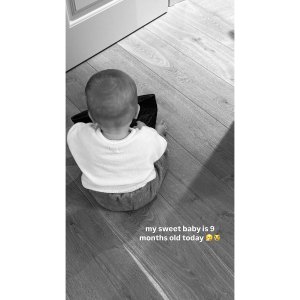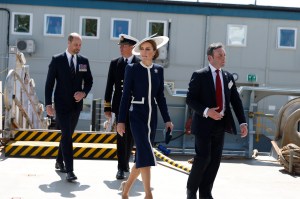Care and Connection Are at the Heart of the 2025 Hawai‘i Triennial
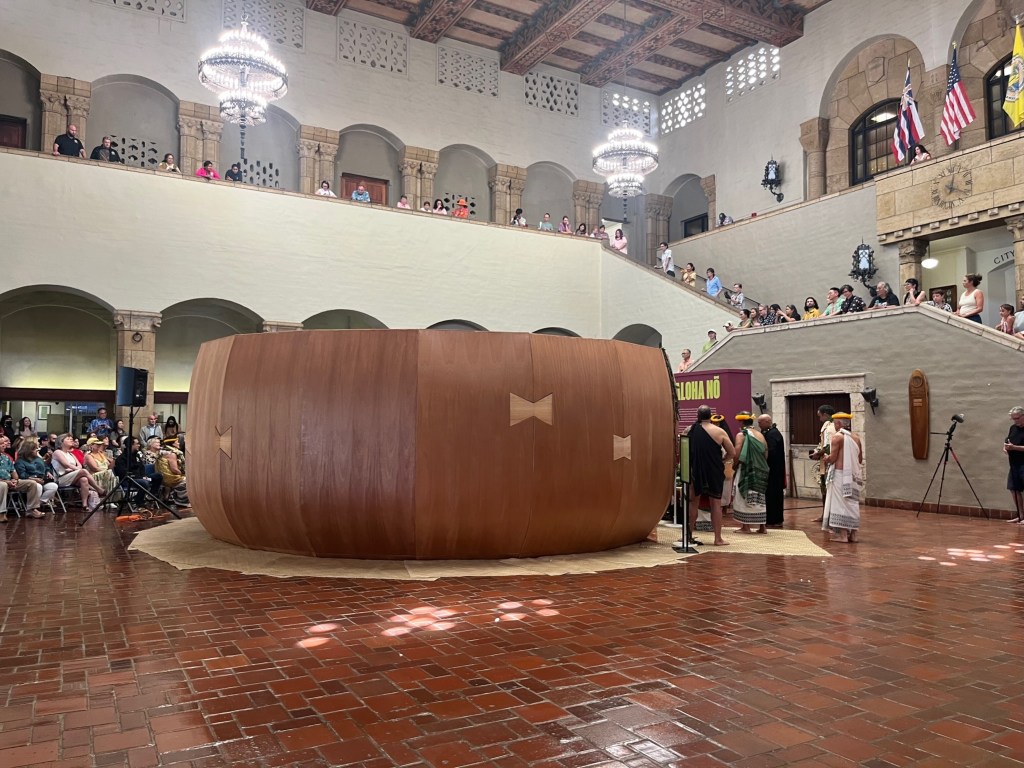

HAWAI‘I — Since mid-February, Honolulu’s city hall has hosted Meleanna Aluli Meyer’s “‘Umeke Lā‘au: Culture Medicine.” The sculpture, which enlarges the curving form of a calabash to room-sized proportions, holds its own within the airy space. An opening allows people to enter, and inside, an audio track speaks the names of 38,000 people who signed an 1897 petition opposing Hawai‘i’s annexation by the United States. In addition, the sculpture was designed to host small gatherings, an invitation that has been taken up by groups including Mongolian shamans, leaders of Honolulu’s police department, and descendants of those 1897 petitioners.
“‘Umeke Lā‘au” thus claims space within a seat of governmental power while critiquing that government’s historical legitimacy. Yet, as its subtitle suggests, the work bends toward healing. Accompanying texts explain protocols for using the space and note Hawaiian practices imbued in the piece, including the symbolic incorporation of the pewa, a fishtail-shaped patch, typically made of wood, used to repair and strengthen valued wooden objects. That spirit was echoed in an opening ceremony that brought together the artist, mayor, cultural practitioners, and colleagues from many art worlds (and perhaps also passersby drawn by the art or the heart-shaped musubi offered as a local spin on Valentine’s Day treats). All were welcomed to experience this ambitious sculpture, which fused traditional Hawaiian values, materials, and forms with public sculpture and social practice.

“‘Umeke Lā‘au”speaks to the strengths of its host exhibition, the 2025 Hawai‘i Triennial ALOHA NŌ. Like the triennial overall, none of the elements are particularly radical. Yet the alchemy of art and place feels bracing — beautifully out of step with a climate of restricted speech alongside the current federal push toward glibly celebratory art rather than nuanced responses to the nation’s history, present, or futures.
While centered on Honolulu and O‘ahu, ALOHA NŌ extended to Maui and Hawai‘i Island — a first for the triennial and its organizer, art nonprofit Hawai‘i Contemporary. This iteration spanned 14 sites, ranging from large institutions like the Honolulu Museum of Art to the tiny Aupuni Space to public parks; many venues closed on May 4, but a number of others remain open.
ALOHA NŌ’s successes reflect the curatorial team’s globally informed yet deeply place-based approach. The title set things up with its addition of “nō” to “aloha.” Curators Wassan Al-Khudhairi, Binna Choi, and Noelle M.K.Y. Kahanu included that small word — an intensifier in ‘ōlelo Hawai‘i (Hawaiian language) — to lightly but firmly detach “aloha” from its globally familiar, debased touristic uses and reassert its grounded strength and call for active care of land, water, and each other. English homonyms add other layers: “no” is a refusal of easy stereotypes and inattention, while “know” is a prompt to learn and to engage. The triennial, and these intersecting ideas, asserted Hawaiʻi’s relevance to this sociopolitical moment in part by situating the archipelago within an international context that emphasized connections across the Pacific, both with other islands and among places engaged in decolonial and environmental struggles.


This approach began with the first curatorial meeting in December 2022, when Kahanu, Choi, and Al-Khudhairi literally grounded their work by tending kalo (taro, a traditional staple crop). They began the process of getting to know each other by joining a workday at the agroecology nonprofit Kākoʻo ʻŌiwi, one of many places where visitors and locals alike can give back to Hawai‘i. That could have been an empty performative gesture, or an earnest action that led nowhere productive. Instead it charted a path of generous critical engagement, open curiosity, and deep work that was buoyed by many colleagues in the area and drew particular inspiration from the work of Manulani Aluli Meyer. Her teachings on Hawaiian epistemology helped anchor the curators’ commitment to aloha nō as a practice, not just a title. They weren’t afraid to dig into richly muddy situations and support artists who do the same.
The exhibition also showcased the trio’s skill in shaping satisfying experiential and conceptual links among varied sites and artworks. At times effectively didactic, at times sublimely unexpected, ALOHA NŌ featured diverse forms of art-making by 49 artists and collectives and gave works space to breathe on their own and to play together across the exhibition. There were more strong projects than I can cover here, and since this is one of several recent responses to the triennial, I’ve focused on venues that have received less attention and/or where interrelations between art and site felt particularly vivid.

For instance, the context of the East Hawai‘i Cultural Center — in Hilo on Hawai‘i Island, a coastal town achingly close to the elemental power of both fire and water — enhanced several standout pieces including Lieko Shiga’s Rasen Kaigan (Spiral Shore), a series of darkly exuberant, near-hallucinatory photographs of a Japanese town before and after the 2011 tsunami; Jane Jin Kaisen’s absorbing video “Halmang,” on female deep-sea divers performing a shamanistic ritual at Jeju Island in South Korea; and Rocky KaʻiouliokahihikoloʻEhu Jensen’s “Ipu Naho‘okelewa‘a,” a carved wooden sculpture of a navigational compass held by two figures — one of which is strengthened by pewa.
The Hō‘ikeākea Gallery at Leeward Community College is near another significant location: Pu‘uloa (Pearl Harbor). The works shown here evoked crosscurrents and solidarities among waters and lands in Hawaiʻi, Korea, and Australia that have been reshaped by colonial occupation and/or military presence. The presentation was anchored by Tiare Ribeaux’s documentary “Waters of Pu‘uloa” on the site’s abundant past, fraught history, and work to restore its waters through Native Hawaiian practices. The ensemble also included Russell Sunabe’s lovely paintings of regional creatures, such as a powerful shark and a tiny seabird, another video from Kaisen’s series of works filmed on Jeju Island, and “Kinyingarra Guwinyanba (Off-Country) Kaulana ‘Ōlepe,” a multi-part work by Megan Cope. The latter created a crucial link between the gallery and an adjacent terrace overlooking Pu‘uloa, where Cope installed a series of sculptures made of wood, wire, and oyster shells. This expands upon similar sculptures she made to foster healthy marine habitats in her native Quandamooka waters; these will eventually be re-sited so they can do the same in a local loko i‘a (fishpond).

Acknowledging the realty that most visitors won’t make it to every site, the curators represented many artists with multiple works within and across venues. One example stands out in particular: “Aloha Ka‘apuni/Revolutionary Aloha,” a commissioned body of work from Hawai‘i’s current poet laureate, Brandy Nālani McDougall. Several locations throughout O‘ahu and Maui included concrete poems whose stanzas explore layered meanings of ka‘apuni, which interpretive materials define as: “‘to make a tour, go around, surround, encircle, rotate, revolve, travel; circuit,’ as well as ‘revolution, revolving.’” McDougall extended her consideration of ka‘apuni to four interventions in small parks around the base of the iconic crater Lē‘ahi (Diamond Head), as part of a collaboration with the new Honolulu public art initiative Wahi Pana (Storied Places). At each site, one reads the land through McDougall’s words on glass panels, along with depictions of traditional fishhooks that allude to the ‘ahi of the crater’s Hawaiian name. These brief texts unearth and re-inscribe Hawaiian history and sensibilities onto this famous place, offering a lens both new and old that challenges others’ claims to own the land, its stories, and its name.
The curatorial trio’s deliberate, consensual, place-based process parallels other recent approaches to similarly scaled exhibitions. While not revolutionary, their approach yielded a powerfully resonant triennial. Perhaps this relates to McDougall’s use of ka‘apuni: circulating, moving through a set of steps, directing energy toward things that need to be seen and spoken. And it highlighted a useful tool: the pewa — that patch used in Hawaiian woodworking. In its work for the triennial, graphic design firm Welcome Stranger incorporated the pewa into the diacritical line above the “o” in ALOHA NŌ. There, it offers an insistent reminder to seek creative ways to link tradition and the present moment, to connect across difference, to put active care into the things one values, and to work toward repair with the fierce and compassionate spirit of aloha nō, without attempting to minimize the challenge or hide the cracks.





The 2025 Hawai‘i Triennial ALOHA NŌ continues at select venues through May 31, June 6, June 28, and beyond; details are on the website. The triennial was curated by Wassan Al-Khudhairi, Binna Choi, and Noelle M.K.Y. Kahanu.

